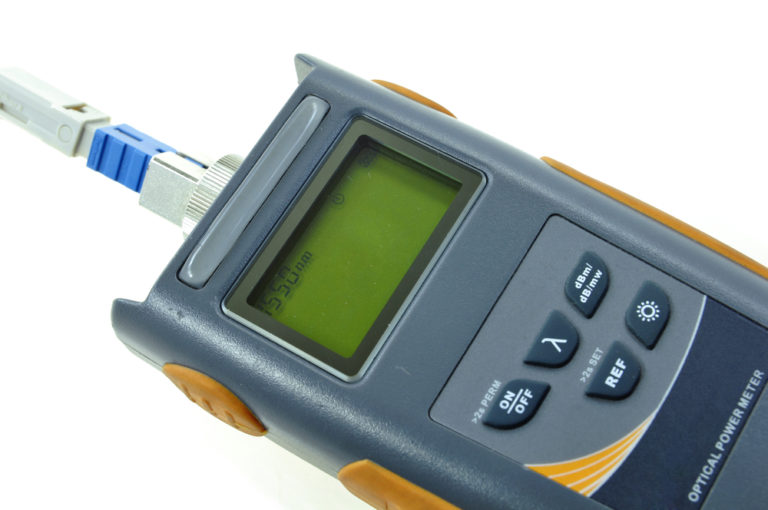
FAQ: “Why don’t you sell 70km CWDM 10G optics in the 1350-1450 range?”

The Major Question
When comparing fiber to copper networks, optical fiber is often the preferred data carrier. Fiber optic networks allow for installation in areas with higher electromagnetic interference, have longer link capabilities, and can transmit more information across longer distances.
Across the various applications of fiber optic networks, it is important to ensure that data is sent from the source to the receiver successfully. If any loss or reflection is experienced, the signal has potential to be degraded.
Often times, we are asked why our company doesn’t offer long range 10G optics in the 1350-1450 nm range. Loss through glass is said to be generally low in the 1200-1600 nm wavelength region, yet light transmission has historically been confined to the 1310 nm and 1550 nm regions. Why is this?
In this blog post, we’ll discuss Optical Return Loss and the logic behind light transmission confinement to the 1310 nm and 1550 nm regions.



Optical Return Loss
Optical Return loss (otherwise known as ORL) is the measure of light attenuation from the input end of the fiber to its output end. Essentially, it is the amount of light that is being reflected throughout a fiber optic cable. ORL is generally expressed in decibels (dB); the higher the decibels, the less light reflection taking place. Overall, the lower the return loss, the greater distance the light can travel before it requires amplification. ORL can be measured as total ORL or section ORL.
The cable’s degree of attenuation is dependent on its wavelength. Table 1 shows attenuation/absorption for both single-mode and multi-mode fiber. The peak of absorption at 1000 nm is caused by the general characteristics of single-mode fiber, and the peak at 1400 nm occurs as a result of traces of water that remain in the fiber. This is one major factor contributing to light transmission confinement.
A number of more specific elements of optical return loss have been conspired to further explain wavelength confinement to the 1310 nm and 1550 nm regions: fiber bending loss above 1600 nm, Rayleigh scattering, and hydroxyl-ion (OH) absorption centered around 1385 nm.
Bend Loss
Bend losses are a frequent problem that occurs when cables are bent to an extent where light signal is no longer able to properly travel throughout the cable. Generally, bend losses are greater for longer wavelengths; thus limiting usable wavelength range of single mode fiber. As for multimode fibers, bend radius is usually less for high-order transverse modes.
Types of Bend Losses
There are two general types of bend losses: microbend and macrobend. Microbend losses occur as a result of minor imperfections in the optical fiber (ie. improper coating applications, improper cabling procedures). This type of loss generally increases the amount of attenuation due to low-order modes becoming coupled with high-order modes. Macrobend losses occur when the bend radius of a fiber is larger in comparison to the fiber diameter, especially when the radius of curvature is less than a few centimeters.
Rayleigh Scattering
Rayleigh scattering is the elastic scattering of light radiation by particles much smaller than the wavelength of the light. Interference with smaller particles than the light wavelength causes the reaction, thus making the light distribute in all directions as it travels down the fiber. The closer the wavelength is in comparison to the particle size, the greater the amount of scattering that occurs.
Since a majority of scattered light in a fiber exits the fiber on the side, only a small amount of scattered light is scattered back and is able to be guided into the fiber core. Due to this, return losses due are generally very high.
Absorption: Hydroxyl Ion
The attenuation caused by the conversion of optical power into another energy form is known as absorption. There are two subcategories of absorption: extrinsic and intrinsic. Intrinsic absorption is caused by vibration resonances in the UV and IR regions of the electromagnetic spectrum, whereas extrinsic absorption is caused by Rayleigh scattering throughout impurities in the fiber optic cable.
A major type of absorption is Hydroxyl Ion (OH) Absorption; it is one of the possible theories to explain light transmission confinement to 1310 nm and 1550 nm. As briefly stated earlier, trapped hydroxyl ions remaining from water serves as the contaminant that causes attenuation and signal loss, and this can explain why a majority of transmission systems operate at a wavelength of 1.31 microns.
How to Test for ORL
There are two major techniques to test for optical return loss:
1) OCWR: An instrument known as an optical CW reflectometer (OCWR) measures a basic power-meter measurement of launch power; from there, it compares the measurement to the optical power that is reflected back. A downfall of this method is that it cannot characterize between Rayleigh backscatter and Fresnel reflection. Due to this, all measurements will include a minimum of 1.5 Rayleigh backscatter.
2) OTDR: The more common approach, known as the time-domain method, uses the Optical time-domain Reflectometer (OTDR) instrument to test for optical return loss. Reflection measurements are conducted through injections of optical pulses into the fiber undergoing testing. At the same time, it is able to extract the light that is scattered or reflected back throughout the fiber. An advantage of using the OTDR is that it can differentiate between Rayleigh and Fresnel activity.
For any further questions, be sure to contact marketing@precisionot.com or visit our website: www.precisionot.com






